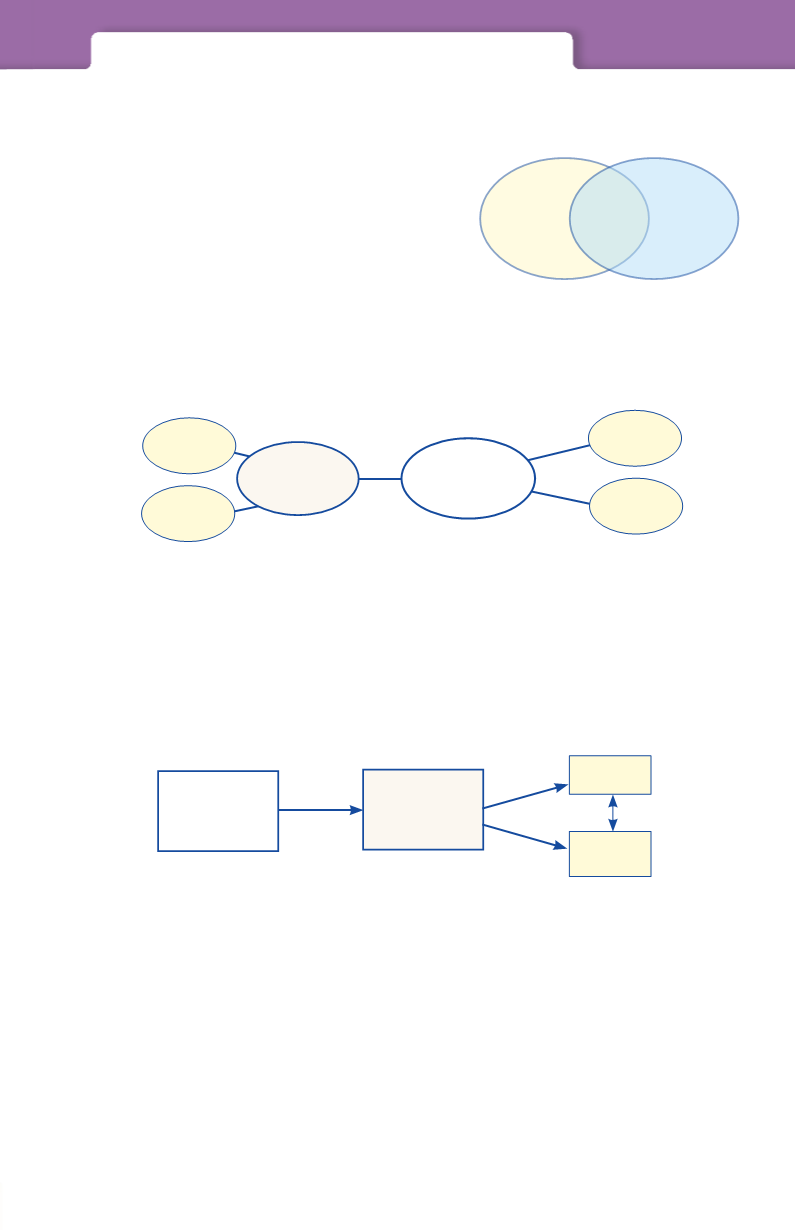
STUDY SKILLS
Draw diagrams of ideas as a way to visualize them.
Some helpful ideas for diagramming include:
•
Venn Diagrams:
Draw two overlapping
circles. Use the overlapping portion to
write down the similarities between two
ideas, and use the peripheral areas to
show the contrasting points.
•
Clustering:
Write a term or idea in a circle and draw a line from that circle
to a different circle that houses a related idea. Repeat this process in as
many directions as you like. This is another great way to visualize the
relationships between abstract ideas and concepts.
• Boxes and Arrows:
Whenever you need to learn the way a process
works (such as the Krebs Cycle, the water cycle, or the emergence of
Existentialism from earlier schools of philosophy), try drawing the
progression from A to Z by drawing a box with one idea in it and
connecting it with an arrow to a box containing a different idea. Use this
method as a way to visualize cause-and-effect relationships and historical
progressions.
Retype
your notes from class on a computer at some point after the class has
finished. This is a good idea for a few reasons:
1.
Copying your notes will help you to review the concepts you have just
learned and to reflect on the material. Think of it as instant studying.
2.
Writing your notes by hand forges pathways in your brain. When you
write letters on a paper, your muscle memory works in tandem with your
brain and helps you to retain more of the information for longer.
3.
Retyping your notes allows you to reorganize, reorder, and add to the
information in your notes, causing your brain to make new connections
between ideas that will allow you to retain more of the information.
Main Theme
Sub-topic
Sub-topic
detail
detail
Sub-topic
Main Idea
Second
Idea
Third
Idea
Third
Idea
similarities
contrasting
points
contrasting
points
SM-5585


